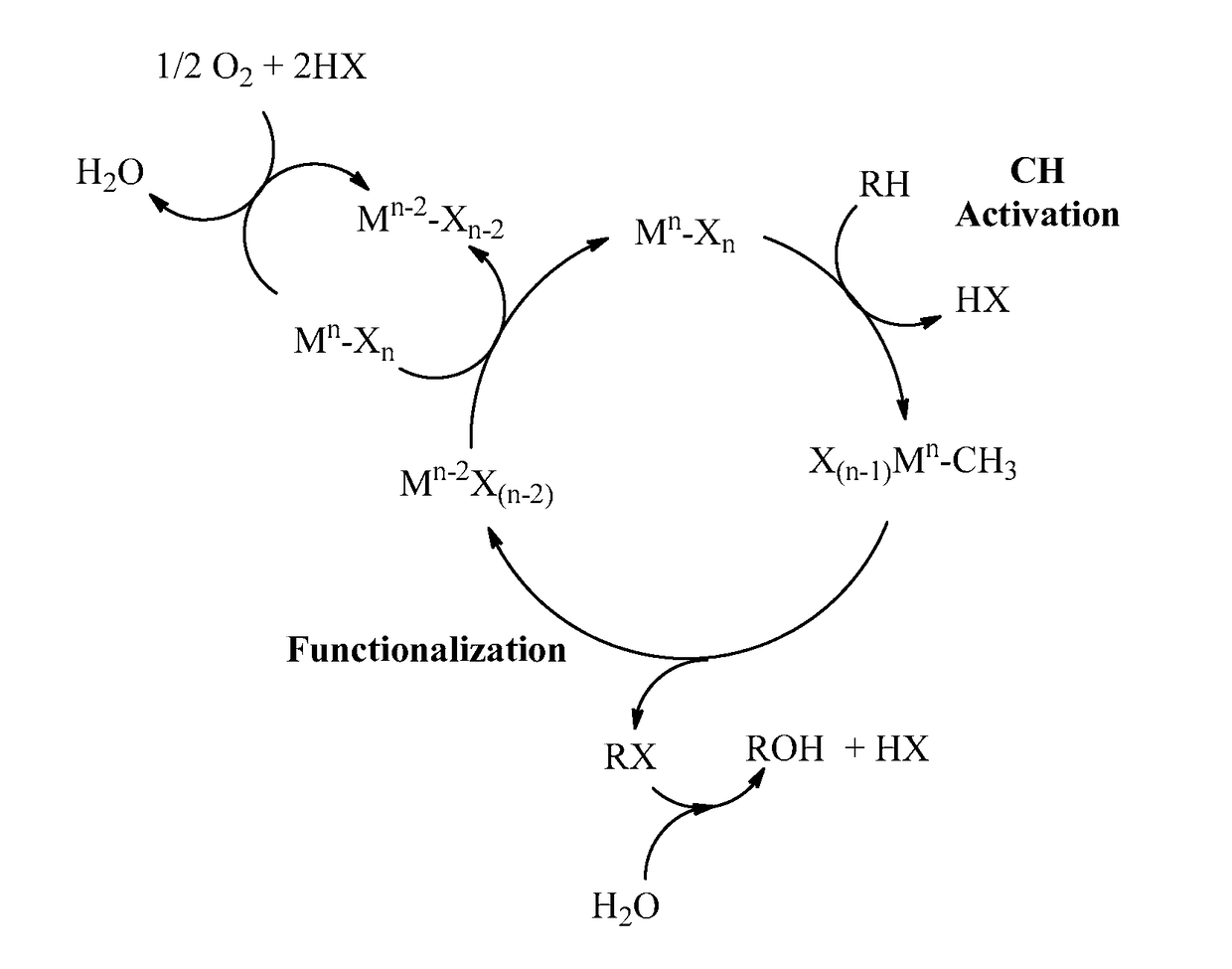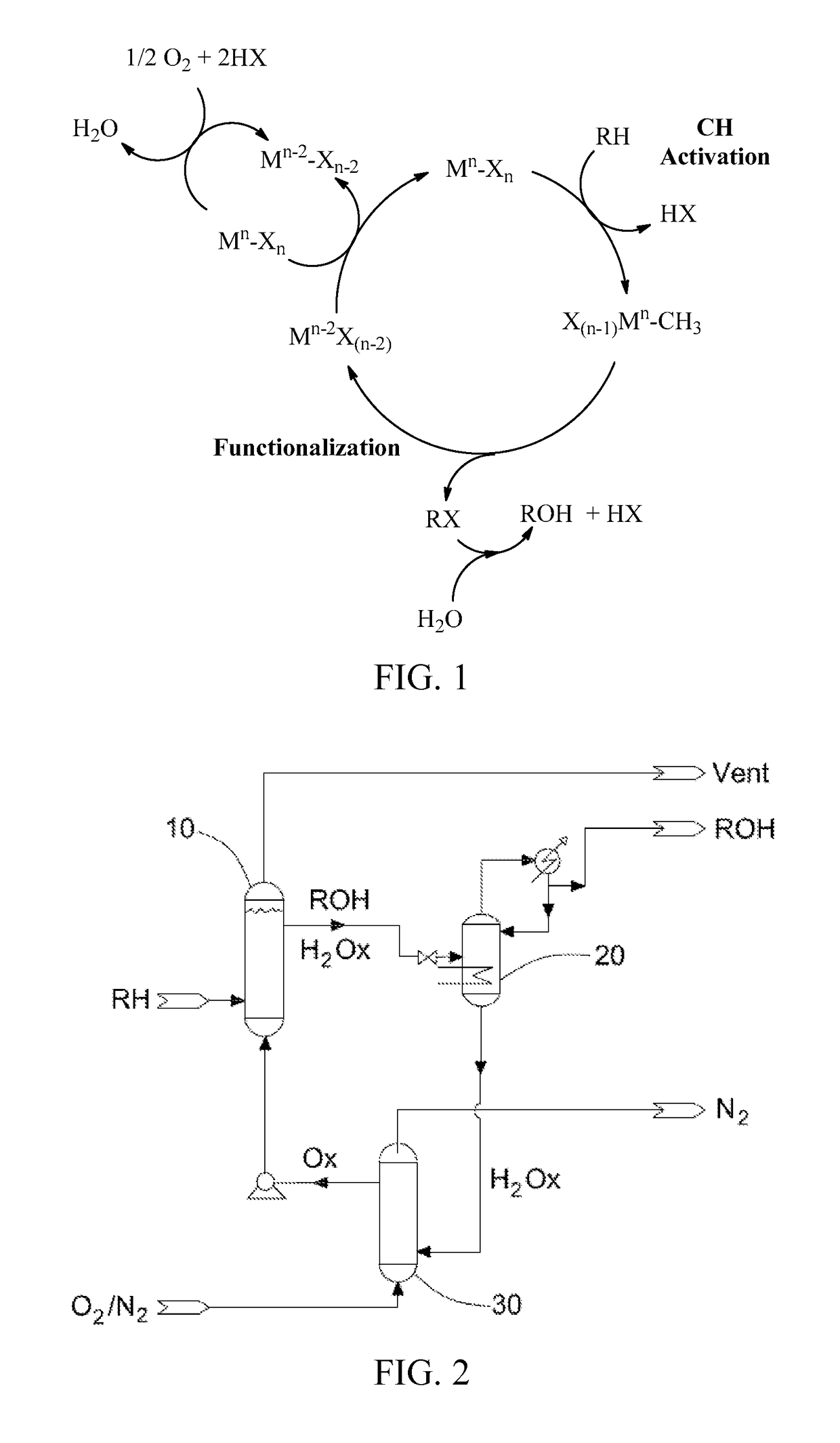Process for the functionalization of heteroalkanes and arenes
a technology applied in the field of heteroalkanes and functionalization, can solve the problems of direct process, undeveloped, and inability to further develop,
- Summary
- Abstract
- Description
- Claims
- Application Information
AI Technical Summary
Benefits of technology
Problems solved by technology
Method used
Image
Examples
example 1
[0138]This example demonstrates the use of an oxidizing electrophile comprising a main group element in oxidized form to activate and functionalize a C—H bond of the arene benzene.
[0139]C6F5I(+3)(TFA)2 (1) was found to be effective for the selective mono-functionalization of benzene (PhH) to PhTFA at lower temperatures (125° C.). Reducing the temperature of this reaction to 100° C. resulted in the complete consumption of 1 with the generation of a new species in solution that was tentatively identified by 1H- and 19F-NMR as the diaryl-λ3-iodane [C6F5—IIII—C6H5][TFA] (3) with only trace levels of PhTFA and C6F5—II (2) observed. Further heating of this solution at 125° C. resulted in the complete conversion of 3 into PhTFA and 2. This observation is consistent with 3 as an intermediate in the conversion of PhH to PhTFA (Scheme 7).
example 2
[0140]This example demonstrates the use of an oxidizing electrophile comprising a main group element in oxidized form to activate and functionalize a C—H bond of the arene toluene.
[0141]The reactivity of toluene, which contains homolytically weak benzylic CH bonds, with C6F5I(+3)(TFA)2 (1) was studied. Using standard reaction conditions (e.g., 3 h, 150° C.), quantitative generation (based upon starting [1]) of p-MeC6H4TFA and o-MeC6H4TFA in a ˜3:1 ratio was observed; with no formation of any benzylic oxy-functionalized products expected from a radical pathway (Scheme 8).
[0142]As is apparent, functionalization of the sp2-hybridized carbon atom of the aryl ring was favored relative to functionalization of the sp3-hybridized carbon atom of the methyl group.
example 3
[0143]This example demonstrates the use of an oxidizing electrophile comprising a main group element in oxidized form to activate and functionalize a C—H bond of the arene benzene.
[0144]Pb(TFA)4 was reacted with benzene (PhH) in trifluoroacetic acid (TFAH) at 25° C. to provide the selectively mono-functionalized product, PhTFA, in 80% yield (Scheme 9). The reaction was very facile as the reaction occurred nearly instantaneously at room temperature.
PUM
| Property | Measurement | Unit |
|---|---|---|
| atomic numbers | aaaaa | aaaaa |
| atomic numbers | aaaaa | aaaaa |
| atomic numbers | aaaaa | aaaaa |
Abstract
Description
Claims
Application Information
 Login to View More
Login to View More - R&D
- Intellectual Property
- Life Sciences
- Materials
- Tech Scout
- Unparalleled Data Quality
- Higher Quality Content
- 60% Fewer Hallucinations
Browse by: Latest US Patents, China's latest patents, Technical Efficacy Thesaurus, Application Domain, Technology Topic, Popular Technical Reports.
© 2025 PatSnap. All rights reserved.Legal|Privacy policy|Modern Slavery Act Transparency Statement|Sitemap|About US| Contact US: help@patsnap.com



